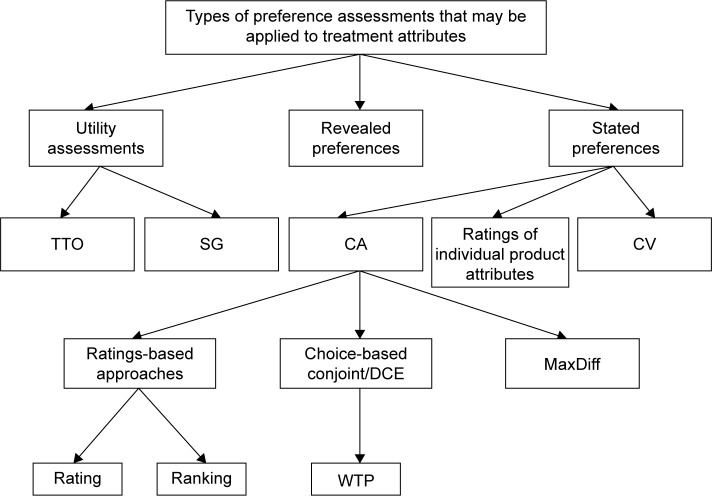Figure 1.
Preference assessment methods.
Notes: This review focused on quantitative controlled studies examining preference for treatment process attributes. Preference assessment methods in the reviewed studies included both types of utility studies (TTO and SG), conjoint analysis (including DCE, conjoint with willingness to pay, and MaxDiff), and contingent valuation studies. MaxDiff is a form of conjoint analysis in which participants are asked to select attributes that are most and least important when making tradeoffs between treatments.32 Abbreviations: TTO, time trade-off; SG, standard gamble; CA, conjoint analysis; CV, contingent valuation; DCE, discrete-choice experiment; WTP, willingness to pay.

